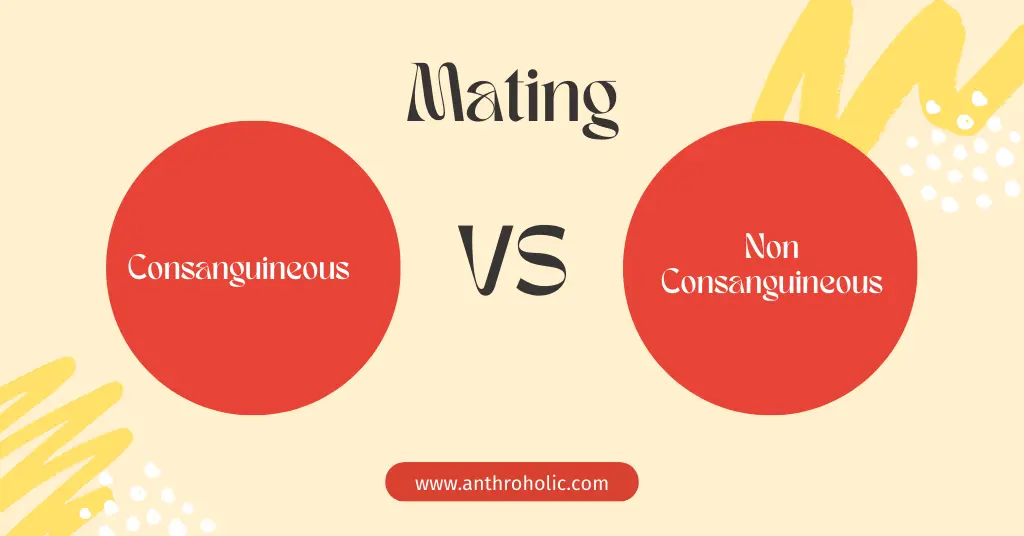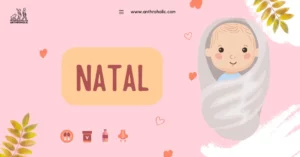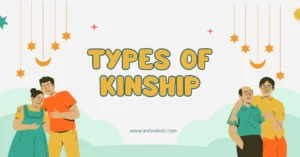AI Answer Evaluation Platform Live Now. Try Free Answer Evaluation Now
Consanguineous and Non-Consanguineous Mating
The genetic composition of an individual is determined by the genes inherited from their parents. When two individuals who are related by blood produce offspring, it is referred to as consanguineous mating, while non-consanguineous mating occurs between unrelated individuals. Consanguineous mating has been a common practice in many cultures throughout history, with a prevalence of 10.4% globally (Bittles, 2012). In contrast, non-consanguineous mating is more prevalent in modern societies.

Genetic Implications
Consanguineous mating:
- Increases the likelihood of homozygosity: Offspring born from consanguineous mating have a higher probability of inheriting identical alleles from both parents, leading to an increased level of homozygosity (Hamamy, 2012).
- Increases risk of rare genetic disorders: Consanguineous mating can lead to the expression of autosomal recessive genetic disorders, as the offspring are more likely to inherit two copies of a deleterious gene (Bittles & Black, 2010).
Non-consanguineous mating:
- Promotes genetic diversity: Offspring born from non-consanguineous mating have a lower probability of inheriting identical alleles from both parents, leading to increased genetic diversity and heterozygosity (Charlesworth & Willis, 2009).
- Reduces risk of rare genetic disorders: Non-consanguineous mating decreases the risk of offspring inheriting two copies of a deleterious gene, reducing the chances of expressing autosomal recessive genetic disorders (Bittles & Black, 2010).
Health Implications
Consanguineous mating:
- Higher infant and child mortality rates: Studies have shown that consanguineous marriages result in higher infant and child mortality rates compared to non-consanguineous marriages (Saadat, 2012).
- Increased risk of congenital malformations: Offspring of consanguineous couples are at a higher risk of developing congenital malformations, such as heart defects, neural tube defects, and facial clefts (Bennett et al., 2002).
Non-consanguineous mating:
- Lower infant and child mortality rates: Non-consanguineous marriages generally result in lower infant and child mortality rates compared to consanguineous marriages (Saadat, 2012).
- Lower risk of congenital malformations: Offspring of non-consanguineous couples have a lower risk of developing congenital malformations compared to offspring of consanguineous couples (Bennett et al., 2002).
Social Implications
Consanguineous mating:
- Reinforces family ties: Consanguineous marriages can strengthen familial relationships and maintain family wealth and property within the family unit (Bittles, 2012).
- Cultural acceptance: In some cultures, consanguineous marriages are highly accepted and considered an important tradition (Bittles, 2012).
Non-consanguineous mating:
- Encourages social integration: Non-consanguineous marriages facilitate social integration and promote cultural exchange (Lieberman & Lobel, 2012).
- Broader choice of partners: Non-consanguineous mating allows individuals to select partners from a wider pool of potential mates, increasing the chances of finding a compatible partner (Charlesworth & Willis, 2009).
| Aspect | Consanguineous Mating | Non-Consanguineous Mating |
|---|---|---|
| Genetic Implications | Increased likelihood of homozygosity and risk of rare genetic disorders | Promotes genetic diversity and reduces risk of rare genetic disorders |
| Health Implications | Higher infant and child mortality rates; increased risk of congenital malformations | Lower infant and child mortality rates; lower risk of congenital malformations |
| Social Implications | Reinforces family ties; cultural acceptance | Encourages social integration; broader choice of partners |
Conclusion
In summary, consanguineous and non-consanguineous mating have distinct genetic, health, and social implications. Consanguineous mating is associated with increased homozygosity, higher risk of rare genetic disorders, and congenital malformations, as well as higher infant and child mortality rates. In contrast, non-consanguineous mating promotes genetic diversity, reduces the risk of genetic disorders and congenital malformations, and is associated with lower infant and child mortality rates. Socially, consanguineous mating can reinforce family ties and be culturally accepted in some societies, while non-consanguineous mating encourages social integration and offers a broader choice of partners.
References
- Bennett, R. L., Motulsky, A. G., Bittles, A., Hudgins, L., Uhrich, S., Doyle, D. L., Silvey, K., Scott, C. R., Cheng, E., McGillivray, B., Steiner, R. D., & Olson, D. (2002). Genetic counseling and screening of consanguineous couples and their offspring: recommendations of the National Society of Genetic Counselors. Journal of Genetic Counseling, 11(2), 97-119.
- Bittles, A. H. (2012). Consanguinity in context. Cambridge University Press.
- Bittles, A. H., & Black, M. L. (2010). Evolution in health and medicine Sackler colloquium: Consanguinity, human evolution, and complex diseases. Proceedings of the National Academy of Sciences, 107(Supplement 1), 1779-1786.
- Charlesworth, D., & Willis, J. H. (2009). The genetics of inbreeding depression. Nature Reviews Genetics, 10(11), 783-796.
- Hamamy, H. (2012). Consanguineous marriages: Preconception consultation in primary health care settings. Journal of Community Genetics, 3(3), 185-192.
- Lieberman, D., & Lobel, T. (2012). Kinship on the Kibbutz: coresidence duration predicts altruism, personal sexual aversions, and moral attitudes among communally reared peers. Evolution and Human Behavior, 33(1), 26-34.
- Saadat, M. (2012). Short-term effects of consanguineous marriage on reproductive outcomes: a systematic review and meta-analysis. European Journal of Epidemiology, 27(9), 661-666.



